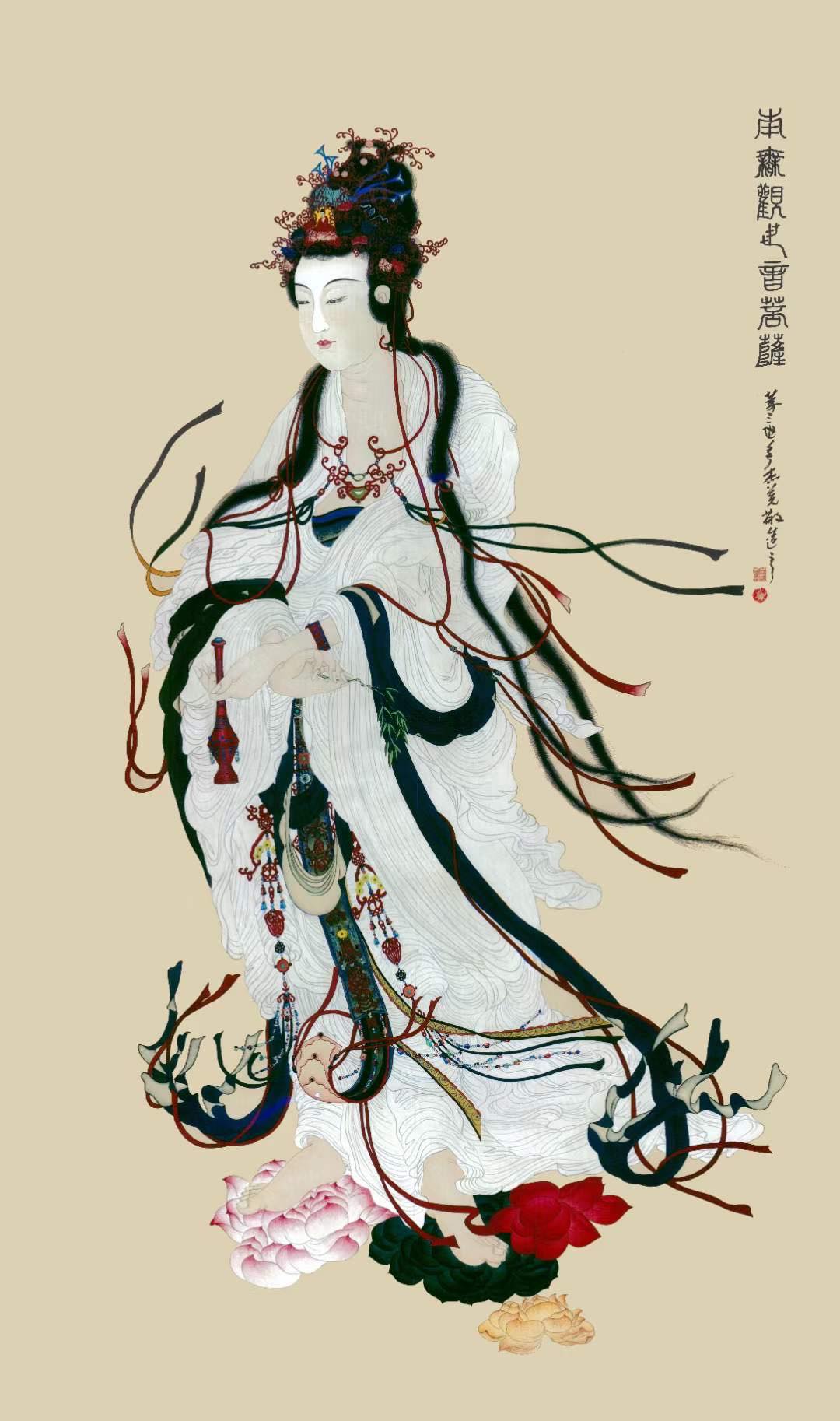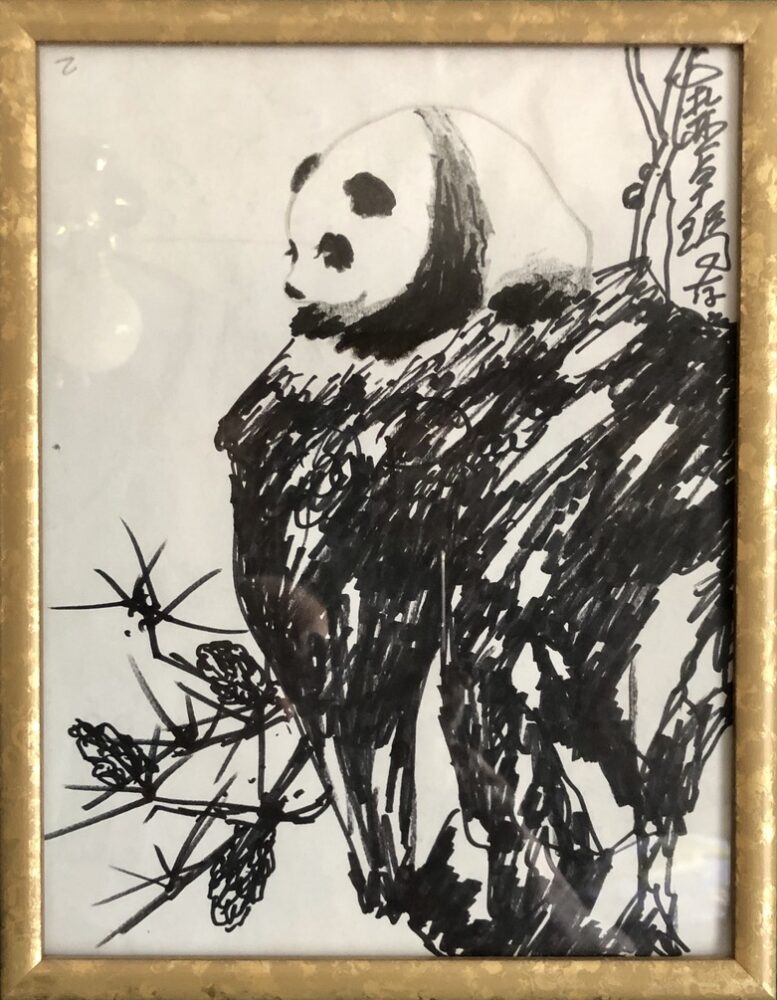H.H. Dorje Chang Buddha III’s Paintings Sell for Tens of Millions
Reposted from Thus Have I Seen by Zhaxi Zhuoma Rinpoche p.170-173
In case any proof was needed of H.H. Dorje Chang Buddha III’s accomplishments in the Craftsmanship Vidya, you could look at the art market’s response to His work. The paintings of the Buddha Master have been selling for millions of dollars for decades. In May 2000 a very large painting of a lion and two cubs titled “Majesty” sold for $2,125,327 at an international auction followed by the sale of another large painting of an Arhat “Venerable Da Li Wang (Sadapralapa)” in October of that same year for $2,207,912. I know of four museums built to display his paintings to the public: near where He was born in Sichuan Province China, in Hong Kong, and in San Francisco and Covina, California in the US.38 More recently in 2015, two smaller paintings sold for much more at Gianguan Auctions in New York City. The small mounted ink-on-paper painting titled “Ink Lotus” sold for $16,500,000 to an anonymous American buyer (FIGURE 70) while “Loquat,” a composition of colored ink washes, calligraphy, poetry, and prose sold for $10,200,000. The Buddha Master’s wife, Dr. Yuhua Shouzhi Wang, is also an internationally acclaimed artist with a grand exhibition of her paintings at the Louvre in Paris, France in 2019. She also sold the ink painting titled “Pomegranates in a Bamboo Basket” for $1.27 million that year.
One of my favorites and the first painting by H.H. Dorje Chang Buddha III that I ever saw was a copy of a stunning painting of Kuan (Guan) Yin Bodhisattva that my acupuncturist had in Asheville, North Carolina. In fact, it was Doctor Kuai who introduced me to the works of Master Wan Ko Yee, as He was then known. I am sure that seeing that painting helped convince me to learn more about and eventually follow H.H. Dorje Chang Buddha III. Years later I was able to see an original of that painting when I was with the Buddha Master in California. I am not sure it was the exact same image, because I believe He painted several versions. It was amazing. You could see every hair on the Bodhisattva’s head, or it appeared that way. I remember how impressed I was with the detailed brushwork. We have another copy of that painting hanging in our main Buddha Hall at our temple in Sanger. I also remember seeing a large and very detailed embroidery of that image that someone had done in China as a tribute to the Buddha Master. This painting of Kuan Yin Bodhisattva (FIGURE 71) and both of the two paintings mentioned above that sold for millions in China are all featured in the Big Blue Treasure book H.H. Dorje Chang Buddha III as examples of His “Fine Brushwork” style, but the Buddha Master painted in many quite different styles including another of my favorites of the Indian Patriarch Bodhidharma done in His “Freehand Brushwork” style shown in FIGURE 73 on page 182.

FIGURE 70: “Ink Lotus” a painting by H.H. Dorje Chang Buddha III.

FIGURE 71: “Kuan Yin Bodhisattva” by H.H. Dorje Chang Buddha III.
Much has already been written about the Buddha Master’s paintings, sculpture, calligraphy, etc., in various art books, so I will not repeat more about that here. The above was just to provide context for the following story I really want to share and to authenticate the value of the Buddha Master’s artwork for the next chapter. I want to tell you about my personal favorite painting that He drew for me in a few minutes on plain typing paper using a black Sharpie. It’s of a pensive panda on a cliff and it hangs in my Buddha Room (FIGURE 72). I mention it to not only tell of my Buddha Master’s talents, which are amazing, but to tell of His ability to empower others. After he finished the Panda sketch and another one of plum blossoms, He threw the magic marker to me and told me to copy them… and I did. Now mine were not perfect reproductions of what He had painted, but they were pretty close and infinitely better than anything I have ever drawn before or since. I know of other students who have become professional artists after receiving His empowerment to do so. I learned much later in Asanga’s Bodhisattvabhumi that one of the reasons a Bodhisattva seeks to perfect the Craftsmanship Vidya is to teach the craft to others so as to attract them to the Dharma. It certainly worked on me.

FIGURE 72: Sharpie sketch of “Panda on Cliff.” by H.H. Dorje Chang Buddha III.
Footnotes
38 Contact https://www.hhdcb3cam.org/ for more information on the H.H. Dorje Chang Buddha III Cultural and Art Museum in Covina, CA and https://www.iamasf.org/ to read about the International Art Museum of America (IAMA) in San Francisco, CA. ↩

